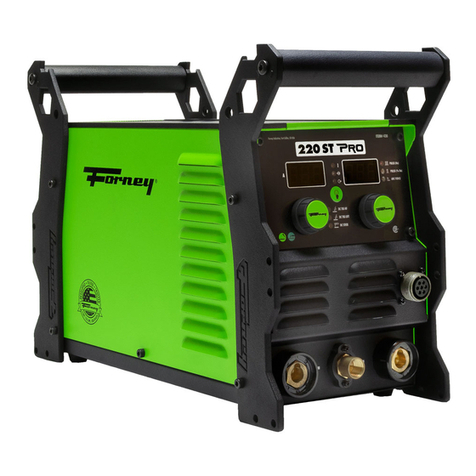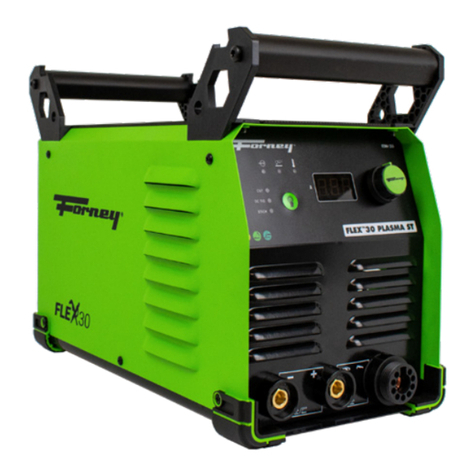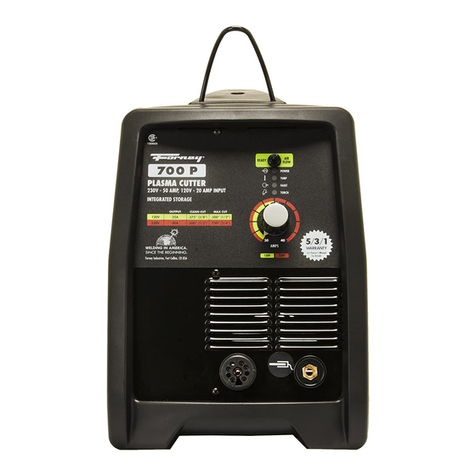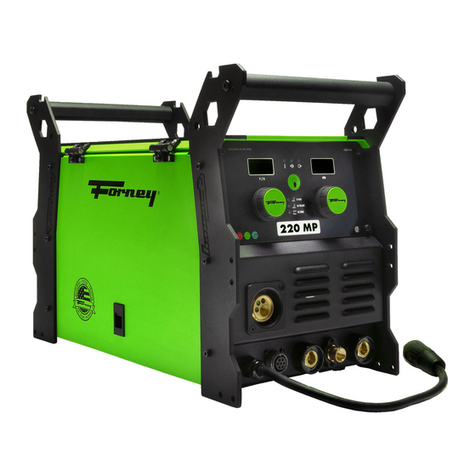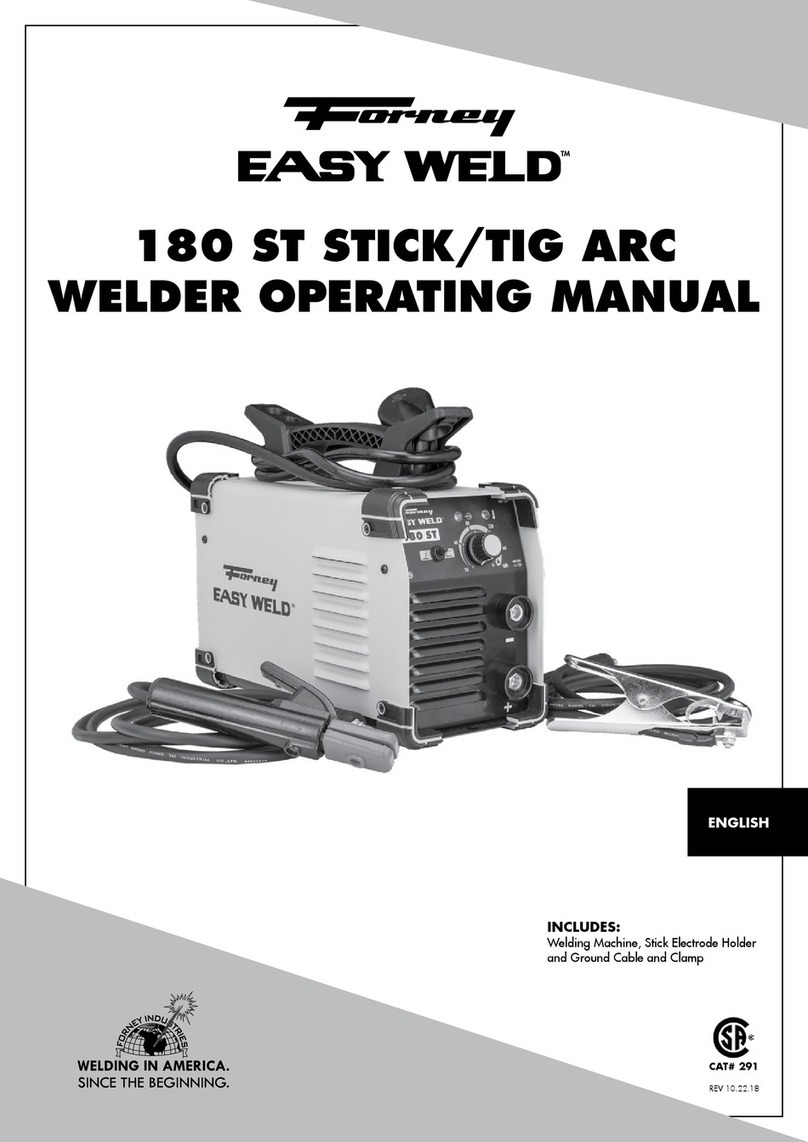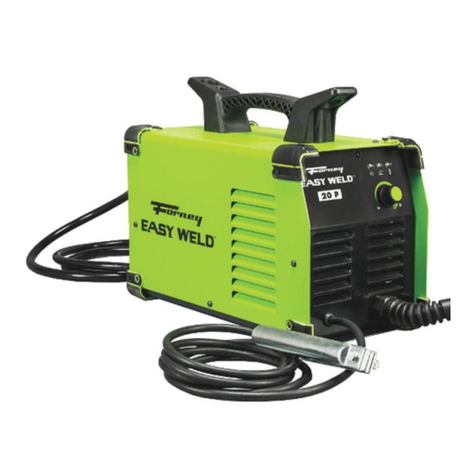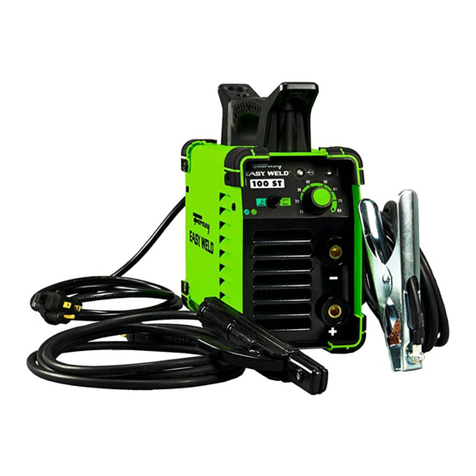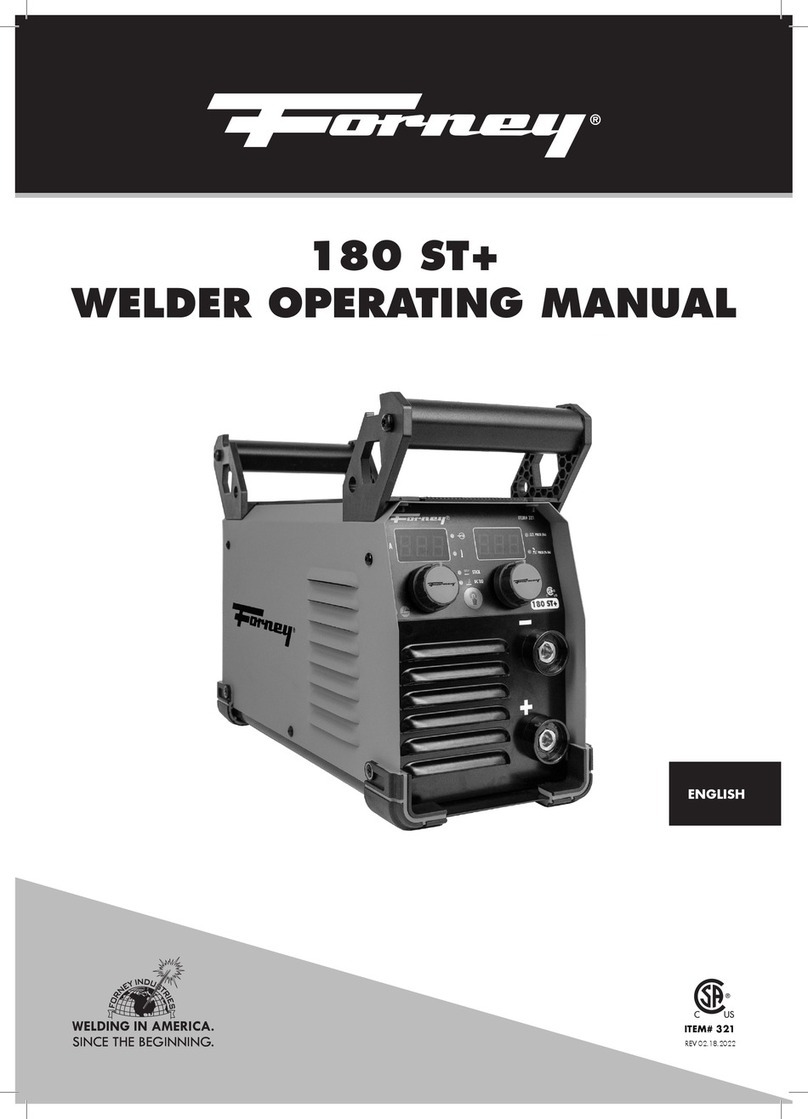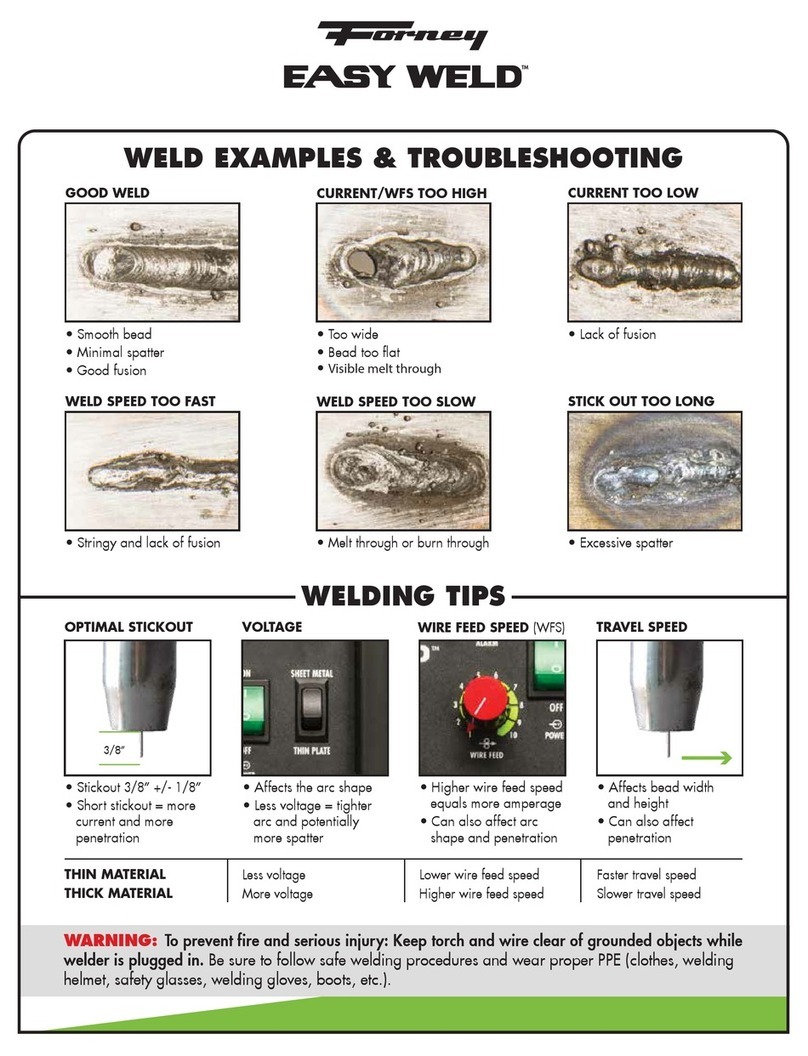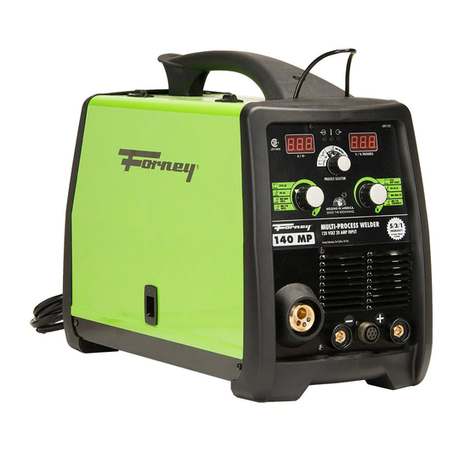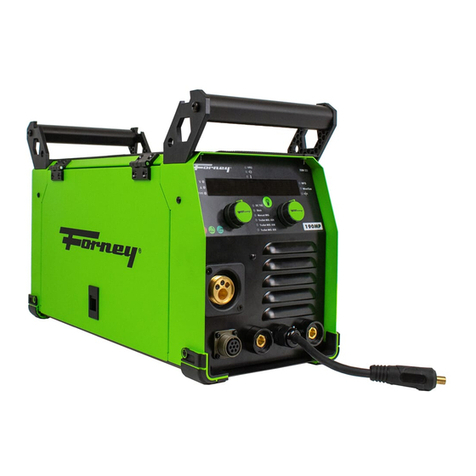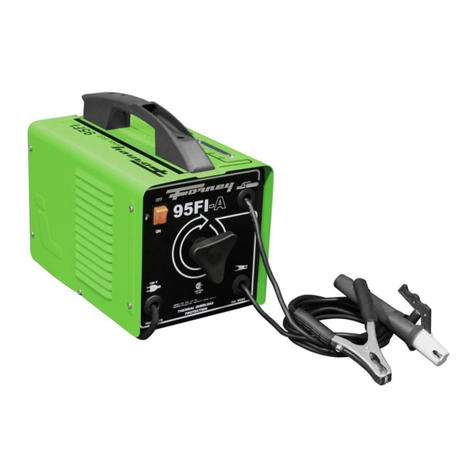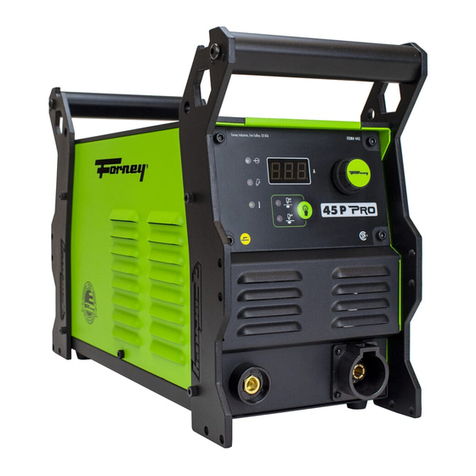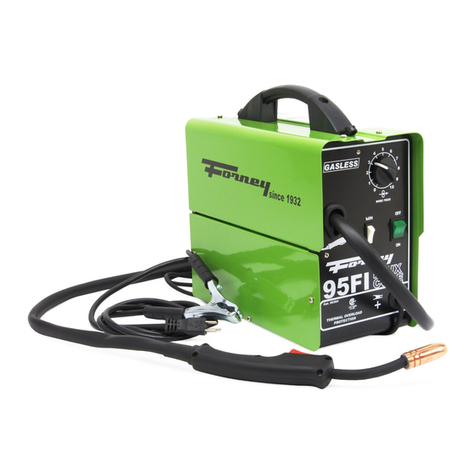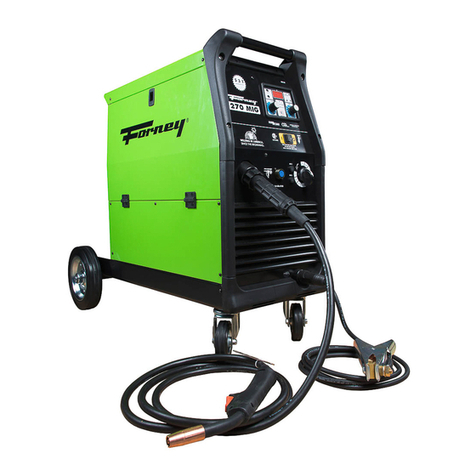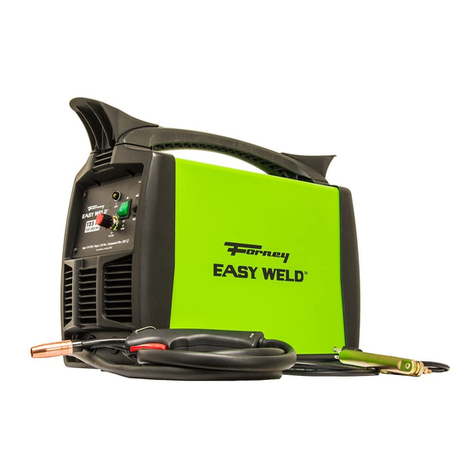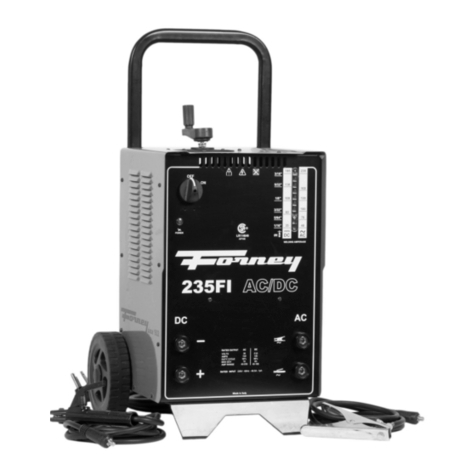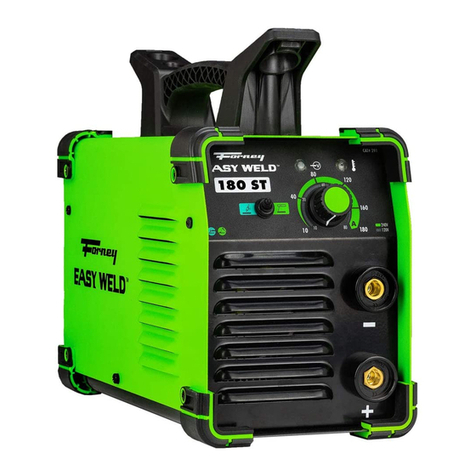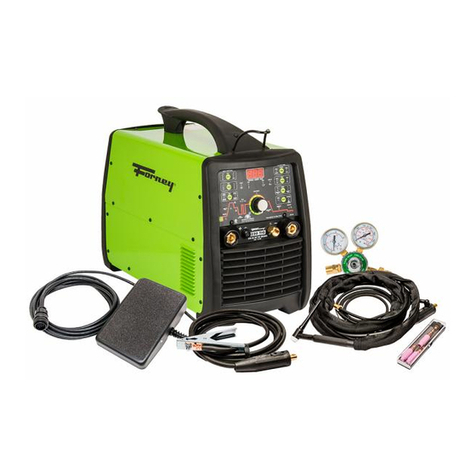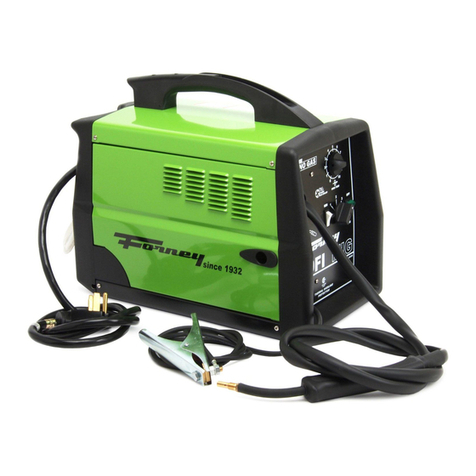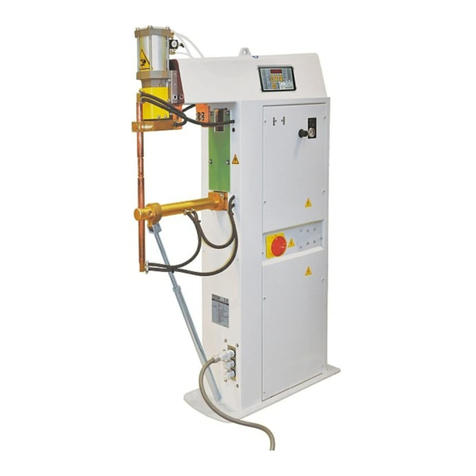Forney 5/3/1 Limited Warranty
Effective July 1, 2015
1) Limited Warranty - Subject to the terms and conditions below, Forney Industris, Inc., Fort Collins,
Colorado, warrants to its original retail purchaser that the new Forney equipment sold after the effective date
of this limited warranty is free of defects in material and workmanship at the time it is shipped by Forney. This
is in lieu of all other warranties, expressed or implied.
2) Notifications: Please call 1-800-521-6038 with your warranty questions. You can also visit:
www.forneyind.com for additional information about your new welder or plasma system.
3) Length of Warranty: Within the warranty periods listed below, Forney will repair or replace any
warranted parts or components that fail due to defects in material or workmanship. Warranty is effective
from the date of original retail purchase. Warranty duration is as follows.
A) 5 years: Original main power rectifiers only to include SCRs, diodes and discrete rectifier modules,
transformers, stabilizers, and reactors.
B) 3 years: Drive Systems, PC Boards, Motors, and Switches and Controls
C) 1 year: MIG guns, relays, contactors, and regulators, plasma cutting torches, and accessories.
D) 90 days: Replacement parts. Does not include labor.
4) Forney’s limited warranty shall not apply to consumables such as contact tips, cutting nozzles, felt wire
cleaner, drive rollers, gas diffusers, plasma torch tips and electrodes, weld cables, tips and parts that fail
due to normal wear. In addition, this warranty does not extend to any damage caused by the untimely
replacement or maintenance of any of the previously listed consumable parts.
5) Warrantor:
Forney Industries
2057 Vermont Drive
Fort Collins, CO 80525
1-800-521-6038
www.forneyind.com
6) Purchaser / Warranty: The original purchaser of the Forney Industries product. The warranty is
not transferable. Forney Industries products are intended for purchase and use by persons trained and
experienced in the use and maintenance of welding equipment.
7) What is not covered under the warranty:
A) Implied warranties, including those of merchantability and fitness for a particular purpose are limited in duration
to this express warranty. After this period, all risk of loss, from whatever reason, shall be on the purchaser.
B) Any incidental, indirect, or consequential loss, damage, or expense that may result from any defect,
failure or malfunction of the Forney product.
C) Any failure that results from accident, purchaser’s abuse, neglect or failure to operate products in
accordance with instructions provided in the owner’s manual(s) supplied with the product.
D) Pre-delivery service, i.e. assembly and adjustment.
8) Claim: In the event of a warranty claim under this warranty, the exclusive remedies shall be, at Forney
Industries sole option:
A) Repair; or
B) Replacement; or
C) Where authorized in writing by Forney Industries, the cost of repair or replacement at an authorized
Forney Industries service station; or
D) Payment of or credit for the purchase price less reasonable depreciation based on actual use upon the
return of the goods at the customer’s risk and expense.
9) Purchaser will:
A) Contact Forney’s customer service at 1-800-521-6038 within 30 days of the defect or failure.
B) Provide dated proof of purchase (typically a purchase receipt).
C) Provide the serial number. Registering your welder at forneywelding.forneyind.com will speed up this process.
D) Deliver or ship welder to a Forney authorized service center. Freight &/or packaging costs, if any, must
be borne by the purchaser.
